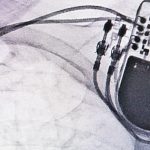The cardiac device sales industry is experiencing robust growth, driven by the escalating prevalence of cardiovascular diseases globally. As a critical component of healthcare, these devices play a pivotal role in diagnosing, treating, and managing heart conditions. From pacemakers and implantable cardioverter-defibrillators (ICDs) to stents and heart valves, the range of cardiac devices available has expanded significantly, offering innovative solutions for patients.
1. Cardiac devices – Market overview and outlook | Acuity Knowledge Partners | www.acuitykp.com
Market Drivers and Trends
Several factors contribute to the buoyant cardiac device sales market:
- Rising Prevalence of Cardiovascular Diseases: The increasing incidence of heart ailments, including coronary artery disease, arrhythmias, and heart failure, is a primary driver of market expansion.
- Aging Population: The growing elderly population is more susceptible to cardiovascular issues, boosting demand for cardiac devices.
- Technological Advancements: Continuous innovation in cardiac device technology, such as minimally invasive procedures and advanced diagnostic tools, is driving market growth. 1. New Trends in the Development of Cardiovascular Medical Devices en.lepumedical.com
- Increasing Healthcare Spending: Rising healthcare expenditures enable greater access to cardiac devices and procedures.
- Favorable Government Initiatives: Supportive government policies and reimbursement schemes are fostering market growth.
Key Segments in the Cardiac Device Sales Market
The cardiac device market is segmented into various categories:
- Cardiac Rhythm Management (CRM): This segment includes pacemakers, ICDs, and cardiac resynchronization therapy (CRT) devices. 1. Cardiac Rhythm Management Products – Abbott Cardiovascular www.cardiovascular.abbott
- Structural Heart Devices: This category encompasses heart valves, atrial septal defect (ASD) and ventricular septal defect (VSD) closure devices, and left atrial appendage (LAA) closure devices.
- Coronary Stents: These devices are used to treat coronary artery disease. 1. When Do You Need a Stent? | NHLBI, NIH www.nhlbi.nih.gov
- Peripheral Vascular Devices: This segment includes devices for treating peripheral artery disease.
Challenges and Opportunities
While the cardiac device market is promising, it also faces challenges:
- Stringent Regulatory Environment: The stringent regulatory landscape can hinder product development and market entry.
- High Costs: The high cost of cardiac devices can limit accessibility for patients in certain regions.
- Competition: Intense competition among market players can impact profit margins.
Despite these challenges, the cardiac device sales market presents significant opportunities:
- Emerging Markets: Expanding market presence in developing countries with growing populations and increasing healthcare spending.
- Focus on Minimally Invasive Procedures: Developing devices for less invasive procedures to reduce patient recovery time and costs.
- Personalized Medicine: Tailoring cardiac devices to individual patient needs for improved outcomes.
The cardiac device market is poised for continued growth, driven by technological advancements, increasing prevalence of heart diseases, and rising healthcare spending. By addressing challenges and capitalizing on opportunities, companies in this sector can contribute to improving patient care and saving lives.







One response to “Cardiac Device Sales Surge”
Nice post!